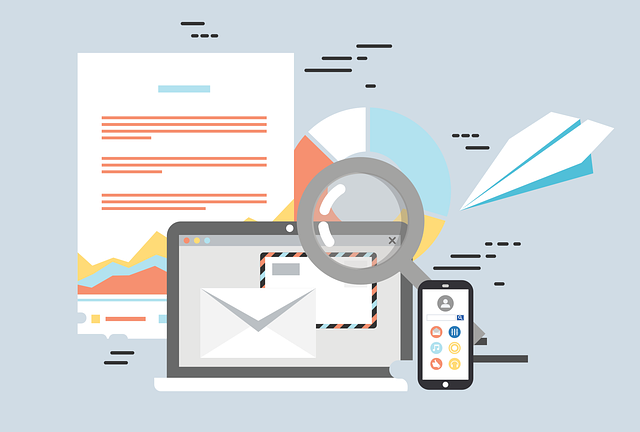Email Marketing Tools That Are Beginner-Friendly & Effective

Top 5 Beginner-Friendly Email Marketing Tools for Small Businesses
When it comes to diving into the world of email marketing, especially for small businesses, the right tools can make all the difference. If you’re just starting out, you might feel overwhelmed by the sheer number of options available. But don’t worry! There are some fantastic beginner-friendly email marketing tools that can help you get your feet wet without drowning in complexity. Let’s explore five of the best options that are not only easy to use but also effective in helping you connect with your audience.
First up is Mailchimp, a name that’s almost synonymous with email marketing. What makes Mailchimp so appealing for beginners is its user-friendly interface and a wealth of resources to guide you along the way. You can easily create beautiful email campaigns using their drag-and-drop editor, which means you don’t need to be a tech whiz to design something eye-catching. Plus, Mailchimp offers a free tier that allows you to send up to 500 emails a month to 2,000 subscribers, making it a great starting point for small businesses looking to test the waters.
Next on the list is Constant Contact, another popular choice that’s particularly well-suited for small businesses. One of the standout features of Constant Contact is its extensive library of templates, which can save you a ton of time when crafting your emails. The platform also provides excellent customer support, including live chat and phone assistance, so if you ever hit a snag, help is just a click or call away. Additionally, Constant Contact offers a 60-day free trial, allowing you to explore its features without any financial commitment.
Moving on, we have Sendinblue, which is gaining traction for its simplicity and versatility. What’s great about Sendinblue is that it combines email marketing with SMS marketing, giving you the flexibility to reach your audience through multiple channels. The platform’s intuitive dashboard makes it easy to manage your campaigns, and its automation features allow you to set up workflows that can save you time in the long run. With a free plan that includes unlimited contacts and up to 300 emails per day, Sendinblue is a fantastic option for small businesses looking to grow their email list.
Another tool worth considering is GetResponse, which offers a comprehensive suite of features that cater to beginners and seasoned marketers alike. One of the highlights of GetResponse is its landing page creator, which can help you capture leads effectively. The platform also includes automation tools that allow you to send targeted emails based on user behavior, making your campaigns more personalized and effective. While GetResponse isn’t free, it does offer a 30-day free trial, giving you a chance to explore its capabilities before committing.
Last but certainly not least is AWeber, a tool that has been around for quite some time and has built a solid reputation for its ease of use. AWeber’s drag-and-drop email builder is perfect for beginners, and its automation features are straightforward enough to set up without a steep learning curve. AWeber also provides a free plan for up to 500 subscribers, which is ideal for small businesses just starting out. Plus, their extensive library of educational resources can help you learn the ropes of email marketing quickly.
In conclusion, choosing the right email marketing tool can set the stage for your small business’s success. With options like Mailchimp, Constant Contact, Sendinblue, GetResponse, and AWeber, you have a variety of beginner-friendly tools at your disposal. Each of these platforms offers unique features that can help you create effective email campaigns, engage with your audience, and ultimately grow your business. So, take your time, explore these options, and find the one that feels right for you!
How to Choose the Right Email Marketing Tool for Your Needs
Choosing the right email marketing tool can feel a bit overwhelming, especially if you’re just starting out. With so many options available, it’s easy to get lost in the sea of features, pricing plans, and user reviews. However, by breaking down your needs and understanding what each tool offers, you can find the perfect fit for your email marketing journey.
First and foremost, it’s essential to identify your goals. Are you looking to build a subscriber list, send out newsletters, or promote a specific product? Knowing what you want to achieve will help narrow down your options. For instance, if your primary goal is to grow your audience, you might want a tool that offers robust list-building features, such as customizable sign-up forms and landing pages. On the other hand, if you’re focused on sending regular newsletters, look for a platform that provides easy-to-use templates and scheduling options.
Once you have a clear idea of your goals, consider your budget. Many email marketing tools offer free plans or trials, which can be a great way to test the waters without committing financially. However, keep in mind that as your list grows or your needs become more complex, you may need to upgrade to a paid plan. It’s wise to compare pricing structures and see what features are included at each tier. Some tools might seem affordable at first glance but can become costly as you scale up.
Another important factor to consider is ease of use. As a beginner, you’ll want a tool that’s intuitive and user-friendly. Look for platforms that offer drag-and-drop editors, pre-designed templates, and straightforward navigation. A tool that feels complicated or overwhelming can quickly turn your email marketing efforts into a frustrating experience. Many providers offer tutorials, customer support, and community forums, so it’s worth checking out these resources to see how responsive they are.
Moreover, think about the integration capabilities of the email marketing tool. If you’re already using other software for your business, such as a customer relationship management (CRM) system or an e-commerce platform, you’ll want a tool that can seamlessly integrate with those systems. This not only saves you time but also ensures that your data flows smoothly between platforms, allowing for more effective marketing campaigns.
As you explore different options, don’t forget to consider the analytics and reporting features. Understanding how your emails perform is crucial for improving your strategy over time. Look for tools that provide insights into open rates, click-through rates, and subscriber engagement. These metrics will help you refine your approach and make data-driven decisions.
Lastly, take the time to read reviews and testimonials from other users. Hearing about real experiences can provide valuable insights into the strengths and weaknesses of each tool. You might discover hidden gems or avoid potential pitfalls by learning from others’ journeys.
In conclusion, choosing the right email marketing tool doesn’t have to be a daunting task. By identifying your goals, considering your budget, prioritizing ease of use, checking integration capabilities, and reviewing analytics features, you can find a platform that meets your needs. With the right tool in hand, you’ll be well on your way to creating effective email campaigns that resonate with your audience and drive results. So take a deep breath, do your research, and get ready to embark on your email marketing adventure!
Essential Features to Look for in Effective Email Marketing Software
When diving into the world of email marketing, especially as a beginner, it can feel a bit overwhelming with all the options available. However, knowing what features to look for in effective email marketing software can make the process much smoother and more enjoyable. First and foremost, user-friendliness is key. You want a platform that doesn’t require a degree in rocket science to navigate. Look for intuitive interfaces that allow you to create and send emails without getting lost in a maze of complicated menus. A drag-and-drop editor can be a game-changer, enabling you to design beautiful emails with ease, even if you don’t have any design experience.
Next, consider the importance of templates. A good email marketing tool should offer a variety of pre-designed templates that you can customize to fit your brand. This not only saves you time but also ensures that your emails look professional and polished. After all, first impressions matter, and a well-designed email can significantly increase your chances of engagement. Additionally, having mobile-responsive templates is crucial since a large portion of emails are opened on mobile devices. You want your emails to look great no matter where they’re viewed.
Another essential feature to look for is automation capabilities. As a beginner, you might not have the time to send out emails manually, especially if you’re managing a growing list. Automation allows you to set up welcome emails, birthday messages, or even follow-ups based on user behavior. This not only saves you time but also helps you maintain consistent communication with your audience, which is vital for building relationships. Moreover, automation can help you segment your audience, allowing you to send targeted messages that resonate with specific groups, ultimately leading to higher engagement rates.
Speaking of engagement, analytics and reporting features are also crucial. You want to be able to track how your emails are performing, right? Look for software that provides insights into open rates, click-through rates, and other key metrics. This data is invaluable as it helps you understand what’s working and what isn’t, allowing you to tweak your strategy accordingly. The best part is that many beginner-friendly tools present this information in easy-to-understand dashboards, so you won’t need to be a data analyst to make sense of it.
Additionally, consider the integration capabilities of the email marketing software. You’ll likely be using other tools, such as social media platforms or customer relationship management (CRM) systems, so having software that easily integrates with these can streamline your processes. This means you can manage your contacts and campaigns more efficiently, saving you time and reducing the chances of errors.
Lastly, don’t overlook customer support. As a beginner, you might run into questions or challenges along the way. Having access to responsive customer support can make a world of difference. Look for platforms that offer live chat, email support, or even a robust knowledge base filled with tutorials and guides. This way, you can feel confident knowing that help is just a click away.
In conclusion, when searching for beginner-friendly and effective email marketing software, keep an eye out for user-friendly interfaces, customizable templates, automation features, robust analytics, integration capabilities, and reliable customer support. By focusing on these essential features, you’ll be well on your way to creating successful email campaigns that engage your audience and drive results. Happy emailing!
